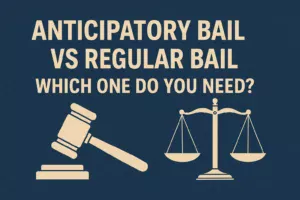This article will make you understand about snatching Laws and Its Penalties
Introduction to Snatching Crimes in India
Snatching, a term that often echoes in the streets of India, refers to the act of forcefully taking away someone’s possessions. It’s not merely a theft; it’s an action that combines theft with assault, leaving the victim in shock and sometimes physical harm. The Indian legal system has been evolving to address this menace with a firm hand, ensuring that the law acts as a deterrent to curb such incidents. This article demystifies the legal framework surrounding snatching offenses in India, shedding light on the laws and penalties designed to combat this crime.
Snatching Laws and Penalties Explained Under Indian Law
The Legal Definition
Snatching can be broadly classified under theft, but due to its violent nature, it also encompasses aspects of robbery. The Indian Penal Code (IPC), which sets out the criminal laws in India, does not explicitly define snatching. However, it falls under the categories of “Theft” (Section 378 IPC) and “Robbery” (Section 390 IPC), depending on the severity and circumstances of the act.
The Distinction Between Theft and Robbery
Theft (Section 378 IPC)
Theft is defined as the act of taking someone’s property without their consent and with the intention to permanently deprive the owner of it. Snatching, when it involves quietly or swiftly taking away someone’s belongings without causing them harm, can be categorized under theft.
Robbery (Section 390 IPC)
Robbery takes the definition of theft a notch higher. It involves theft but with the added element of violence or the threat of violence. If the snatcher uses force or causes fear of injury to snatch away belongings, the act qualifies as robbery.
Penalties for Snatching in India
Theft Penalties (Section 379 IPC)
For theft, the law prescribes a punishment of imprisonment which may extend to three years or with fine, or both. The severity of the penalty depends on the judge’s discretion and the circumstances surrounding the theft.
Robbery Penalties (Section 392 IPC)
Robbery carries a more severe penalty, reflecting the seriousness of the crime. The convicted individual can face rigorous imprisonment for a term which may extend to ten years, and also be liable to a fine. In cases where the robbery causes death or grievous hurt, the penalty can be more severe.
Measures to Strengthen Laws Against Snatching
Recognizing the rising menace of snatching and its impact on public safety, several states in India have taken measures to impose stricter penalties. Amendments and special provisions are being introduced to ensure that the punishment for snatching reflects the traumatic experience of the victims. These include the possibility of categorizing severe snatching cases under more serious sections of the IPC, leading to longer sentences.
Conclusion: A Call for Awareness and Prevention
The laws and penalties against snatching in India are designed to deter criminals and protect citizens. However, legal measures alone cannot eradicate this crime. It requires a collective effort from the public, law enforcement agencies, and the government to create awareness, enforce preventive measures, and ensure swift justice for victims. By understanding the legal implications of snatching, individuals can better protect themselves and assist in the fight against this crime.
FAQs on Snatching Laws and Penalties in India
1. What is snatching?
Snatching is the act of forcefully taking away someone’s possessions, combining elements of theft and assault.
2. Does Indian law specifically mention snatching?
No, Indian law does not explicitly mention snatching but covers it under theft (Section 378 IPC) and robbery (Section 390 IPC).
3. What is the legal difference between theft and robbery?
Theft involves taking property without consent and intention to permanently deprive the owner, while robbery includes theft with the use of violence or threat.
4. What are the penalties for theft in India?
Theft can lead to imprisonment up to three years, or a fine, or both (Section 379 IPC).
5. What is the punishment for robbery?
Robbery can result in up to ten years of imprisonment and may also include a fine (Section 392 IPC).
6. Can snatching be considered a serious crime?
Yes, when snatching involves violence or threat, it’s considered a serious crime under robbery.
7. Are there any specific laws for snatching in certain Indian states?
Yes, some states have introduced stricter penalties and amendments to address snatching more effectively.
8. How does the law enforce penalties for snatching?
Penalties are enforced based on the severity of the act, categorized under theft or robbery, and the discretion of the judge.
9. What measures can victims of snatching take?
Victims should immediately report the crime to the police and provide all necessary details for investigation.
10. How does the Indian Penal Code define theft?
Theft is defined as taking property without consent and with the intent to permanently deprive the owner of it (Section 378 IPC).
11. Is snatching punishable by imprisonment?
Yes, depending on whether it’s classified as theft or robbery, imprisonment can be a penalty.
12. Can snatching lead to grievous hurt penalties?
If the act of snatching involves grievous hurt, it could lead to more severe penalties under robbery provisions.
13. Are there any preventive measures against snatching?
Yes, awareness, public safety initiatives, and law enforcement measures are vital in preventing snatching.
14. What role do citizens play in combating snatching?
Citizens can help by being vigilant, reporting crimes, and cooperating with law enforcement.
15. Can minors be charged for snatching?
Minors involved in snatching are dealt with under the Juvenile Justice (Care and Protection) Act, with appropriate legal proceedings.
16. What constitutes “grievous hurt” in the context of robbery?
Grievous hurt involves serious bodily harm, which is more severe in the context of robbery penalties.
17. Are snatching penalties the same across all Indian states?
Penalties may vary as states can enact specific laws or amendments for stricter enforcement.
18. How do law enforcement agencies investigate snatching cases?
Investigations involve collecting evidence, witness statements, and surveillance footage to apprehend the perpetrator.
19. Can snatching be tried under fast-track courts?
For quicker resolution, some snatching cases may be tried under fast-track courts, depending on jurisdiction and severity.
20. What is the role of CCTV in snatching cases?
CCTV footage is crucial for identifying perpetrators and providing evidence in snatching cases.
21. How can the public help prevent snatching?
Public awareness, reporting suspicious activities, and community policing initiatives can help prevent snatching.
22. Are there any rehabilitation programs for snatchers?
Rehabilitation programs may be available for convicted individuals, focusing on reintegration and preventing recidivism.
23. Can snatching victims claim compensation?
Victims can seek compensation through legal proceedings, depending on the case’s outcome and circumstances.
24. What impact does snatching have on society?
Snatching contributes to a sense of insecurity and fear among the public, impacting overall social harmony.
25. How does the Indian legal system classify violent snatching?
Violent snatching is classified under robbery, given its inclusion of assault or threat of violence.
26. Can bystanders intervene in snatching incidents?
While bystanders can help, it’s important to ensure personal safety and report the incident to law enforcement immediately.
27. What advancements are being made to tackle snatching?
Law enforcement agencies are using technology, surveillance, and intelligence operations to tackle snatching more effectively.
28. How can technology help in preventing snatching?
Technology like CCTV, mobile tracking, and public alert systems play a crucial role in prevention and investigation.
29. Are there any community initiatives against snatching?
Community watch programs, awareness campaigns, and collaboration with police are initiatives against snatching.
30. What future measures are expected to combat snatching in India?
Future measures may include stricter laws, enhanced surveillance, and public awareness programs to effectively combat snatching.
















